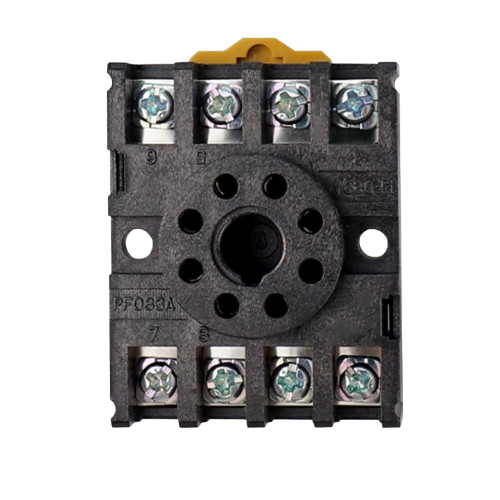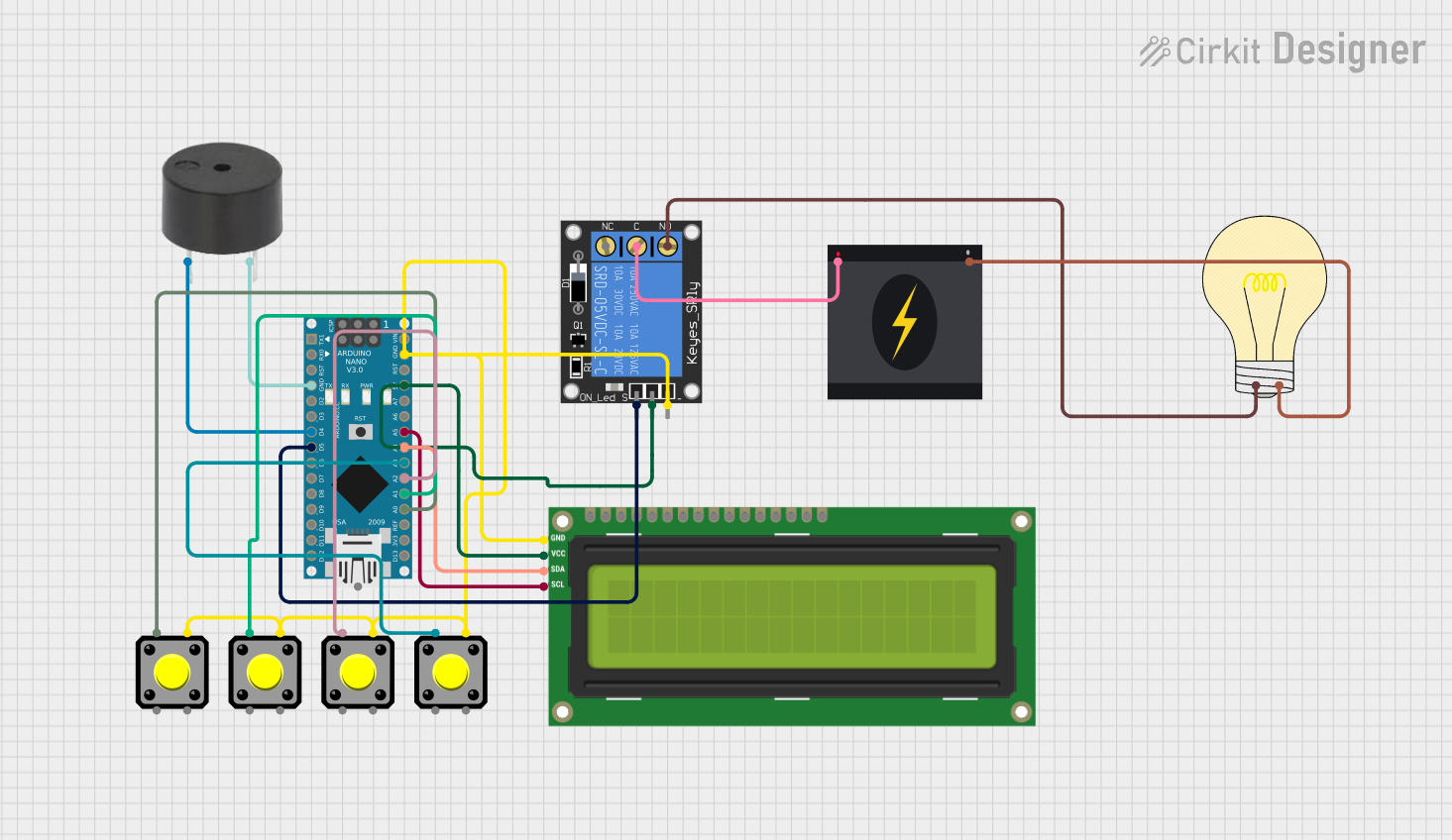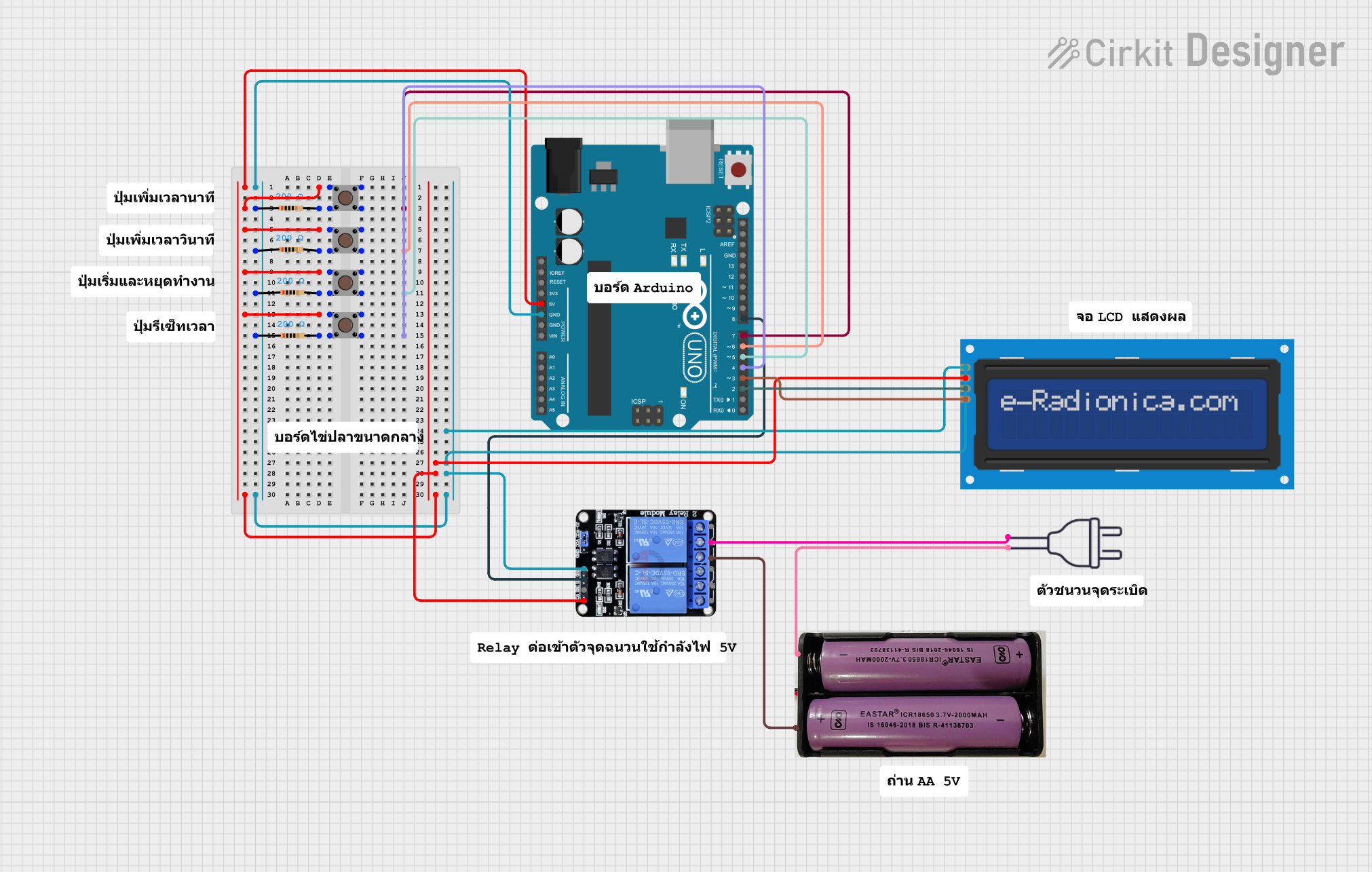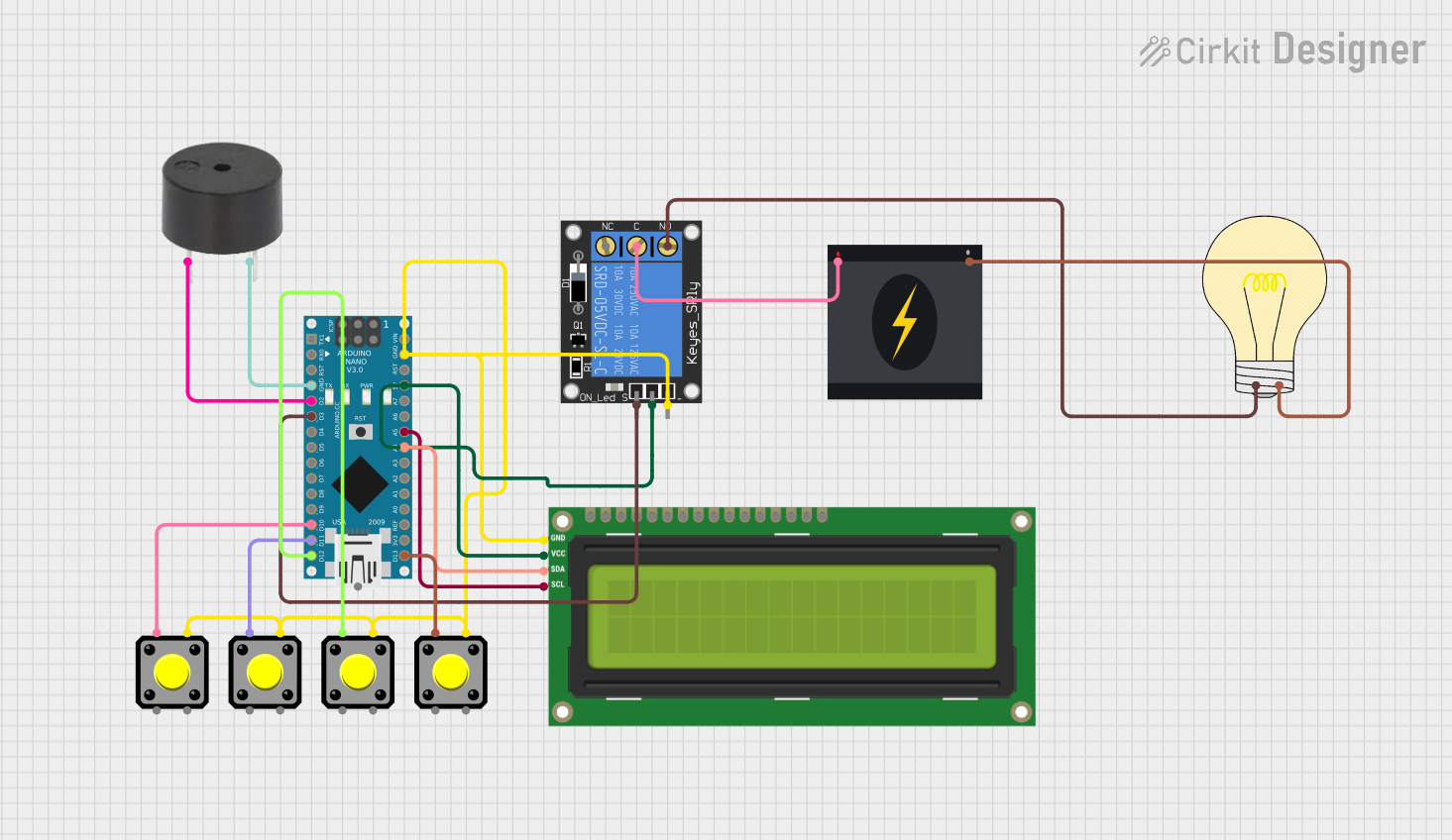
How to Use Time Delay Relay: Examples, Pinouts, and Specs

 Design with Time Delay Relay in Cirkit Designer
Design with Time Delay Relay in Cirkit DesignerIntroduction
A Time Delay Relay is an electromechanical or solid-state device that opens or closes its contacts after a preset time delay. This component is widely used in applications requiring time-based control, such as industrial automation, motor control, lighting systems, and HVAC systems. By introducing a delay in the operation of a circuit, Time Delay Relays help ensure proper sequencing, prevent equipment damage, and improve system efficiency.
Common applications include:
- Delayed motor start to prevent inrush current.
- Sequential control of machinery in industrial processes.
- Automatic lighting systems with delayed turn-off.
- Safety systems requiring timed responses.
Explore Projects Built with Time Delay Relay

 Open Project in Cirkit Designer
Open Project in Cirkit Designer
 Open Project in Cirkit Designer
Open Project in Cirkit Designer
 Open Project in Cirkit Designer
Open Project in Cirkit Designer
 Open Project in Cirkit Designer
Open Project in Cirkit DesignerExplore Projects Built with Time Delay Relay

 Open Project in Cirkit Designer
Open Project in Cirkit Designer
 Open Project in Cirkit Designer
Open Project in Cirkit Designer
 Open Project in Cirkit Designer
Open Project in Cirkit Designer
 Open Project in Cirkit Designer
Open Project in Cirkit DesignerTechnical Specifications
Below are the general technical specifications for a typical Time Delay Relay. Note that specific models may vary, so always refer to the datasheet of your relay.
| Parameter | Value |
|---|---|
| Operating Voltage | 12V DC, 24V DC, or 110-240V AC |
| Contact Type | SPDT (Single Pole Double Throw) or DPDT (Double Pole Double Throw) |
| Contact Rating | 10A at 250V AC / 10A at 30V DC |
| Time Delay Range | 0.1 seconds to 10 minutes (adjustable) |
| Timing Adjustment | Potentiometer or DIP switches |
| Trigger Input | Voltage signal or mechanical switch |
| Operating Temperature | -20°C to 60°C |
| Mounting Type | DIN rail or panel mount |
Pin Configuration and Descriptions
The pin configuration of a Time Delay Relay typically includes input, output, and control pins. Below is an example of a 5-pin Time Delay Relay:
| Pin Number | Name | Description |
|---|---|---|
| 1 | Input (+) | Positive voltage supply (e.g., 12V DC or 24V DC) |
| 2 | Input (-) | Ground connection |
| 3 | Common (COM) | Common terminal for the relay contacts |
| 4 | Normally Open (NO) | Contact that closes after the time delay |
| 5 | Normally Closed (NC) | Contact that opens after the time delay |
Usage Instructions
How to Use the Component in a Circuit
- Power the Relay: Connect the input pins (e.g., Pin 1 and Pin 2) to the appropriate power supply. Ensure the voltage matches the relay's operating voltage.
- Set the Time Delay: Adjust the potentiometer or DIP switches on the relay to set the desired delay time.
- Connect the Load:
- Connect the load to the Common (COM) pin and either the Normally Open (NO) or Normally Closed (NC) pin, depending on the desired operation.
- For example, use the NO pin if you want the load to activate after the delay.
- Trigger the Relay: Apply a trigger signal (e.g., a voltage pulse or switch activation) to start the timing sequence.
- Observe Operation: After the preset delay, the relay will switch its contacts, activating or deactivating the connected load.
Important Considerations and Best Practices
- Voltage Compatibility: Ensure the relay's operating voltage matches your power supply.
- Contact Ratings: Do not exceed the relay's contact rating to avoid damage.
- Isolation: Use optoisolators or separate power supplies if the relay is controlling high-voltage loads.
- Debouncing: If using a mechanical switch as a trigger, consider adding a debouncing circuit to prevent false triggering.
- Heat Dissipation: Ensure proper ventilation or heat sinking if the relay operates continuously for long periods.
Example: Using a Time Delay Relay with Arduino UNO
Below is an example of how to use a Time Delay Relay with an Arduino UNO to control a load after a 5-second delay.
Circuit Connections
- Connect the relay's input pins to a 12V DC power supply.
- Connect the relay's trigger pin to Arduino digital pin 7.
- Connect the relay's COM pin to one terminal of the load.
- Connect the NO pin to the other terminal of the load.
- Connect the load's power supply as required.
Arduino Code
// Time Delay Relay Example with Arduino UNO
// This code triggers a Time Delay Relay after a 5-second delay.
const int relayPin = 7; // Pin connected to the relay trigger input
void setup() {
pinMode(relayPin, OUTPUT); // Set relayPin as an output
digitalWrite(relayPin, LOW); // Ensure relay is off at startup
}
void loop() {
delay(5000); // Wait for 5 seconds
digitalWrite(relayPin, HIGH); // Trigger the relay
delay(10000); // Keep the relay on for 10 seconds
digitalWrite(relayPin, LOW); // Turn off the relay
delay(5000); // Wait for 5 seconds before repeating
}
Troubleshooting and FAQs
Common Issues and Solutions
Relay Does Not Activate:
- Check the power supply voltage and ensure it matches the relay's operating voltage.
- Verify the trigger signal is being applied correctly.
- Inspect the wiring for loose or incorrect connections.
Load Does Not Operate:
- Ensure the load is connected to the correct relay contacts (COM and NO/NC).
- Check the load's power supply and ensure it is functioning properly.
- Verify the relay's contact rating is sufficient for the load.
Relay Activates Erratically:
- Add a debouncing circuit if using a mechanical switch as a trigger.
- Check for electrical noise or interference in the circuit.
Time Delay is Incorrect:
- Recheck the potentiometer or DIP switch settings.
- Ensure the relay is not faulty by testing with a different unit.
FAQs
Q: Can I use a Time Delay Relay with an AC load?
A: Yes, as long as the relay's contact rating supports the AC voltage and current of the load.
Q: How precise is the timing of a Time Delay Relay?
A: The timing precision depends on the relay's design. Mechanical relays may have slight variations, while solid-state relays offer higher accuracy.
Q: Can I use a Time Delay Relay for both delay-on and delay-off operations?
A: Some relays support both modes, but you may need to configure the relay or use a specific model designed for dual functionality.
Q: What happens if I exceed the relay's contact rating?
A: Exceeding the contact rating can cause overheating, arcing, or permanent damage to the relay. Always use a relay with a suitable rating for your application.